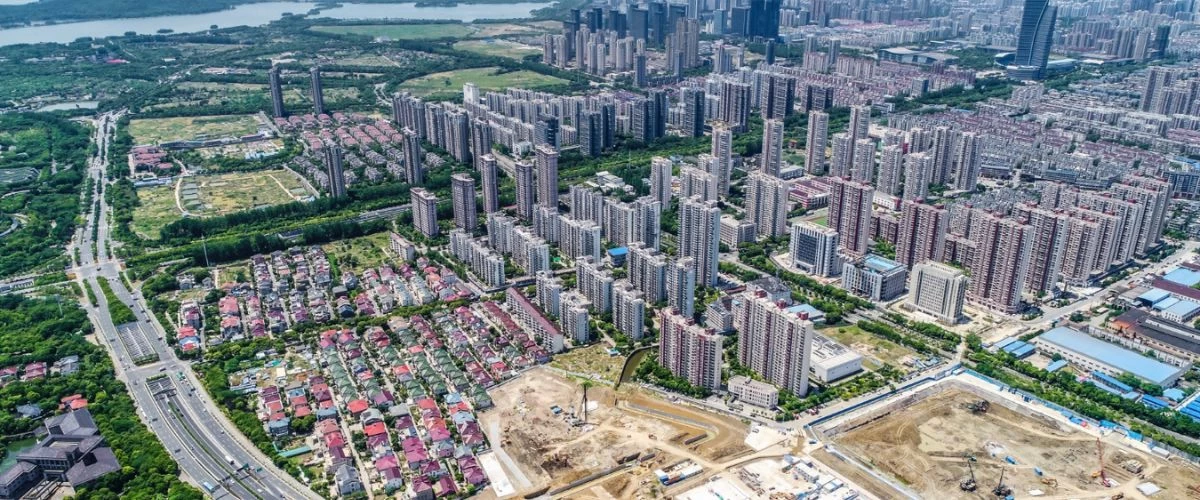Zoning Wonders: Unveiling the Myriad Types of Zones

Although the word "zoning" may not spark an understanding right away, it is an important component of urban planning that influences our landscapes. Classifying land by type of zones is essential in organising and controlling land usage, ensuring that communities run well. The world of zoning includes a vast range of categories, each with its own specific purpose and set of rules, from quiet residential neighbourhoods to busy commercial areas.
Residential Zones: Where Homes Flourish
The foundation of urban planning is residential zones, which offer places for communities to flourish. Since they are largely used for housing, these places guarantee quiet, safe, and hospitable neighbourhoods for families. To meet diverse housing needs, multiple subcategories within residential zones exist.
Residential single-family zones: These types of zones are distinguished by detached single-family dwellings. It provides families with a tranquil atmosphere away from the noise and bustle of urban centres, frequently with green spaces and parks for amusement. These zones often include restrictions on development that protect the peace and quiet of the neighbourhood by prohibiting the construction of multi-unit homes or commercial buildings.
Multi-Family Residential Zone: multi-family residential zones allow for the construction of apartment complexes, condominiums, and townhomes. These regions are crucial for metropolitan centres with constrained space because they can accommodate larger population densities. They help create a community that is more welcoming and lively by offering a variety of housing options.
Commercial Zones: Engines of Economic Activity
Commercial zones are the epicentre of economic activity in the heart of bustling cities. They house businesses, retail outlets, and entertainment venues, creating vibrant hubs that drive commerce and innovation.
Retail Zone: Shopping districts, ranging from modest boutiques to enormous shopping malls, are the focus of retail zones. These places frequently have pedestrian-friendly features and are placed intentionally to draw customers. Regulations may limit industry activity to preserve a good shopping experience.
Central Business District (CBD): The CBD serves as the hub of a city's economic activity and is home to important company headquarters, financial institutions, and governmental buildings. The skyline is dominated by skyscrapers, representing the dense commercial community. Zoning in the CBD frequently promotes vertical building to maximise land use, creating iconic urban landscapes.
Industrial Zones: The Heart of Production
Industrial zones are the economic backbone of cities, supporting the production and distribution of goods and services.
Heavy Industrial Zone: These zones accommodate large-scale manufacturing, warehousing, and industrial processes. They are characterised by the presence of heavy machinery and equipment. Due to their nature, heavy industrial zones are often located away from residential areas to mitigate noise and environmental impacts.
Light Industrial Zone: Light industrial zones focus on smaller-scale manufacturing, assembly, and distribution activities. These areas may be more accessible and integrated into urban landscapes, ensuring a steady flow of goods while minimising disruptions to nearby communities.
Special Use Zones: Tailored for Unique Purposes
Special-use zones cater to specific needs or activities that may not neatly fit into the conventional residential, commercial, or industrial categories.
Educational Zone: These zones are dedicated to educational institutions, including schools, colleges, and universities. They are designed to foster learning environments and may include facilities for sports and recreational activities.
Recreational Zone: Recreational zones prioritise leisure and outdoor activities. They encompass parks, sports complexes, and cultural centres, providing spaces for communities to unwind, exercise, and engage in cultural pursuits.
Mixed-Use Zones: Fostering Diversity and Connectivity
Mixed-use zones represent a blend of residential, commercial, and sometimes industrial uses within the same area. They are designed to create dynamic, walkable neighbourhoods where residents can live, work, and play without extensive commutes.
These zones promote a more sustainable and connected urban lifestyle, reducing the need for long-distance travel for daily activities. Encouraging a mix of uses fosters vibrant communities that thrive around the clock.
To sum up, the many urban landscapes are woven together into a variegated tapestry by the types of zones. By carefully planning and controlling land use, cities may achieve a delicate balance between residential havens, busy commercial areas, fruitful industrial sectors, and specialised zones designed for certain uses. To design cities that are practical and enriching for their citizens, it is essential to comprehend these various zones.
Get in Touch
Let our experts help you answer your questions
Get in Touch
Let our experts help you answer your questions


